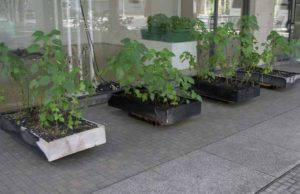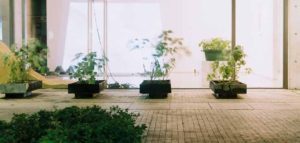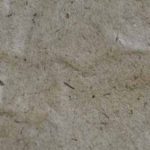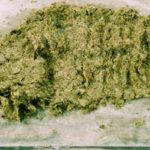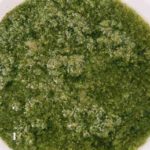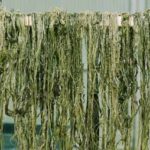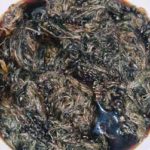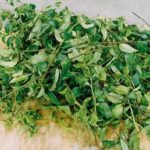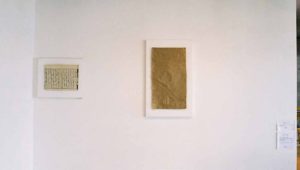
延喜式に倣い、つくる
サイズ:65,12 cm× 35,52 cm (2 尺2 寸× 1 尺2 寸)( 古代の紙サイズ)
技法・材料: ペーパーワーク・からむし・木灰・びなんかずらの粘液・和本( 江戸時代の延喜式)
西会津国際芸術村を訪れ、カラムシを採取することから、このプロジェクトは始まりました。カラムシは古代(794年( 奈良時代) 以前) の製紙の中で最も重要な原料でありながらも平安時代(1000 年頃) には廃れた原料です。このたびは、手元にある、延喜式( 967年に施行の律令の施行細則・内容は794 年以前) の中の記述に沿ったかたちで、制作を行い、再現された紙は、江戸時代刊行の延喜式と共に並べ、作品としました。 また、ギャラリーの内外には、古代の炭焼きに近い形で焼いた、テラコッタやプラ舟に採集したカラムシを植え展示しています
Title:I made a work according to the descriptions of Engi Shiki.
This project started by visiting Nishiaizu Kokusai Geijutsu-mura (international art village), Fukushima, and cropping karamushi (a false nettle).
In the ancient times before the Nara period (before 794, karamushi was the most important raw material for paper making of all in Japan, but it became out of use in the Heian period (around 1,000). I used this chance to produce (or restore, reproduce) it according to the descriptions of Engi Shiki (a collection of detailed regulations of Ritsuryo System practiced in 967; but, its contents refer to those before 794) at hand, and displayed the reproduced paper with the version of Engi Shiki published in the Edo period. Inside and outside the gallery, I planted the cropped karamushi in a tera-cotta or a plastic tub burnt in the style like the ancient charcoal making. With these plants, the paper is presented here as an artwork.
In this presentation, I intended that restoring ancient paper, including its invisible aspects, is an art activity. Also, the reproduction made me (the maker), realize the awareness of the then paper making, and brought me a new recognition of it. I have done the presentation, believing that it has much significance and possibility to the present condition of art making of our time.
